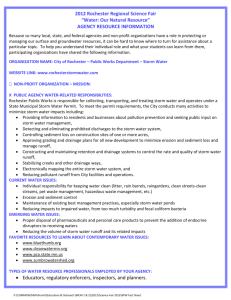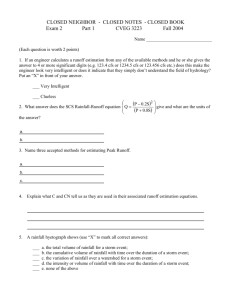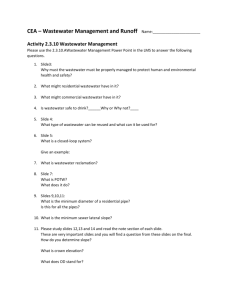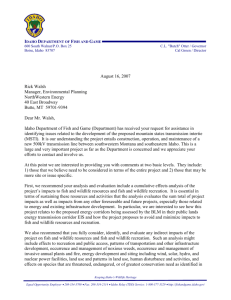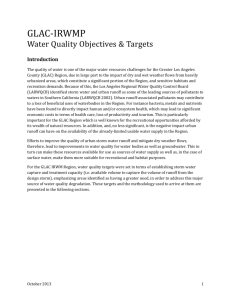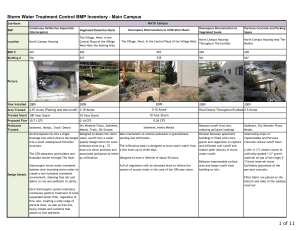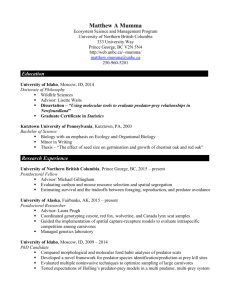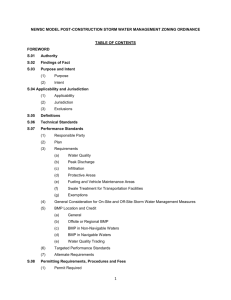Name____________________per____ Environmental Awareness
advertisement
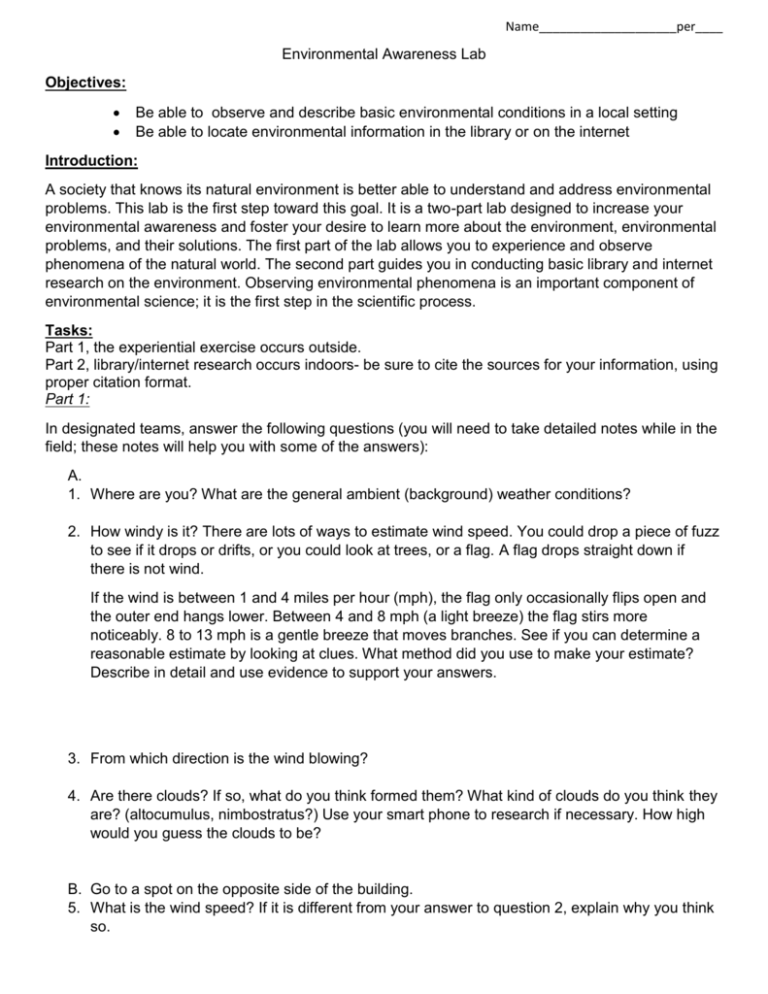
Name____________________per____ Environmental Awareness Lab Objectives: Be able to observe and describe basic environmental conditions in a local setting Be able to locate environmental information in the library or on the internet Introduction: A society that knows its natural environment is better able to understand and address environmental problems. This lab is the first step toward this goal. It is a two-part lab designed to increase your environmental awareness and foster your desire to learn more about the environment, environmental problems, and their solutions. The first part of the lab allows you to experience and observe phenomena of the natural world. The second part guides you in conducting basic library and internet research on the environment. Observing environmental phenomena is an important component of environmental science; it is the first step in the scientific process. Tasks: Part 1, the experiential exercise occurs outside. Part 2, library/internet research occurs indoors- be sure to cite the sources for your information, using proper citation format. Part 1: In designated teams, answer the following questions (you will need to take detailed notes while in the field; these notes will help you with some of the answers): A. 1. Where are you? What are the general ambient (background) weather conditions? 2. How windy is it? There are lots of ways to estimate wind speed. You could drop a piece of fuzz to see if it drops or drifts, or you could look at trees, or a flag. A flag drops straight down if there is not wind. If the wind is between 1 and 4 miles per hour (mph), the flag only occasionally flips open and the outer end hangs lower. Between 4 and 8 mph (a light breeze) the flag stirs more noticeably. 8 to 13 mph is a gentle breeze that moves branches. See if you can determine a reasonable estimate by looking at clues. What method did you use to make your estimate? Describe in detail and use evidence to support your answers. 3. From which direction is the wind blowing? 4. Are there clouds? If so, what do you think formed them? What kind of clouds do you think they are? (altocumulus, nimbostratus?) Use your smart phone to research if necessary. How high would you guess the clouds to be? B. Go to a spot on the opposite side of the building. 5. What is the wind speed? If it is different from your answer to question 2, explain why you think so. Name____________________per____ 6. From which direction is the wind blowing? Is it different from your answer to question 3, explain why? 7. In the nearest parking lot, look for the largest and oldest vehicles. a. What is the oldest vehicle (make, model, year if you can)? b. What is the largest vehicle (make, model, and year)? c. Which of the vehicles most likely consumes the most fuel? How did you determine this? Cite your source, you might want to check the U.S. EPA website. d. Which of the vehicles pollutes the most? Cite the source that supports this opinion. 8. On the basis of your tour of the school, how many human-made devices did you see that might increase the population if wildlife or enhance the living conditions of wildlife (habitat, water, birdhouses, perches, wildlife cover)? 9. How does doing a problem set such as this benefit environmental awareness? C. Go outside to a location around the school. 10. Find a grove of trees or an urban forest edge, or get as close as you can to one. Stay there for 4-5 minutes. a. Describe where you are. b. Glance around. How many different species of animals (birds, mammals, reptiles, fish, insects) do you see and hear? c. Form your two thumbs and index fingers into a circle and place it on he ground over the grass. The count how many different plants and insect species you see in the circle. How many plants did you see? How many insect species? Were there more or less than you expected? 11. Find a new location that has no trees, and repeat the preceding steps. Provide the following information: a. Location b. Species observation Name____________________per____ c. Circle assessment (did you find more or less than expected)? 12. A certain amount of precipitation will infiltrate into the ground, some may evaporate, and the rest will flow as storm water runoff (see illustration) a. What factors influence the degree of ground infiltration? b. Estimate the percentage of your campus that has impervious surfaces (parking lot, sidewalks, roofs) c. Which direction will the storm water runoff at our school? Give specific reasons for your answer. d. Figure 1.3 shows some common pollutants that are in urban storm water runoff. What pollutants are likely to be in the runoff from our school campus? What are the sources of these pollutants? e. On the basis of previous answers, what are the likely environmental impacts of the storm water runoff? 13. Locate a lawn near our classroom. Does it have nice green grass? Lawns are referred to as “nature on a leash” a. What does the term “nature on a leash mean”? b. In your opinion, what is required to keep “nature on a leash” and what are the environmental impacts of doing so? Name____________________per____ Part 2: Library/Internet Research The questions that follow are designed to further your basic environmental perception and awareness. For each answer, properly cite the reference that you used. 1. What time did the sun rise today (date and time)? 2. When are the longest and shortest days of the year, and what are the names of the events associated with these days? 3. When day and night the same length, and what is this phenomenon called?. 4. How long is our growing season in Idaho? Give approximate start and end times. 5. What is the total rainfall in the area last year? 6. Name three endangered mammals listed in Idaho. 7. What is the longest river in Idaho, what is its length in miles? 8. When is the fishing season open for Salmon or some other specific fish species to Idaho? 9. Name two species of trees native (not introduced) to the Treasure Valley. 10. Is there a state official who is in charge of both natural resources and environmental protection? What is the person’s name and title? If not, what are the names and titles of the highest officials who are in charge of natural resources and environmental protection? 11. What is the source of your drinking water? 12. Where does the garbage from your house go? (name the facility and location) 13. What is the primary fuel source for electricity that supplies your house? 14. Determine how far your house is from the nearest: a. U.S. National Forest b. U.S. National Wildlife Refuge c. Local environmental recreation area d. Farm




